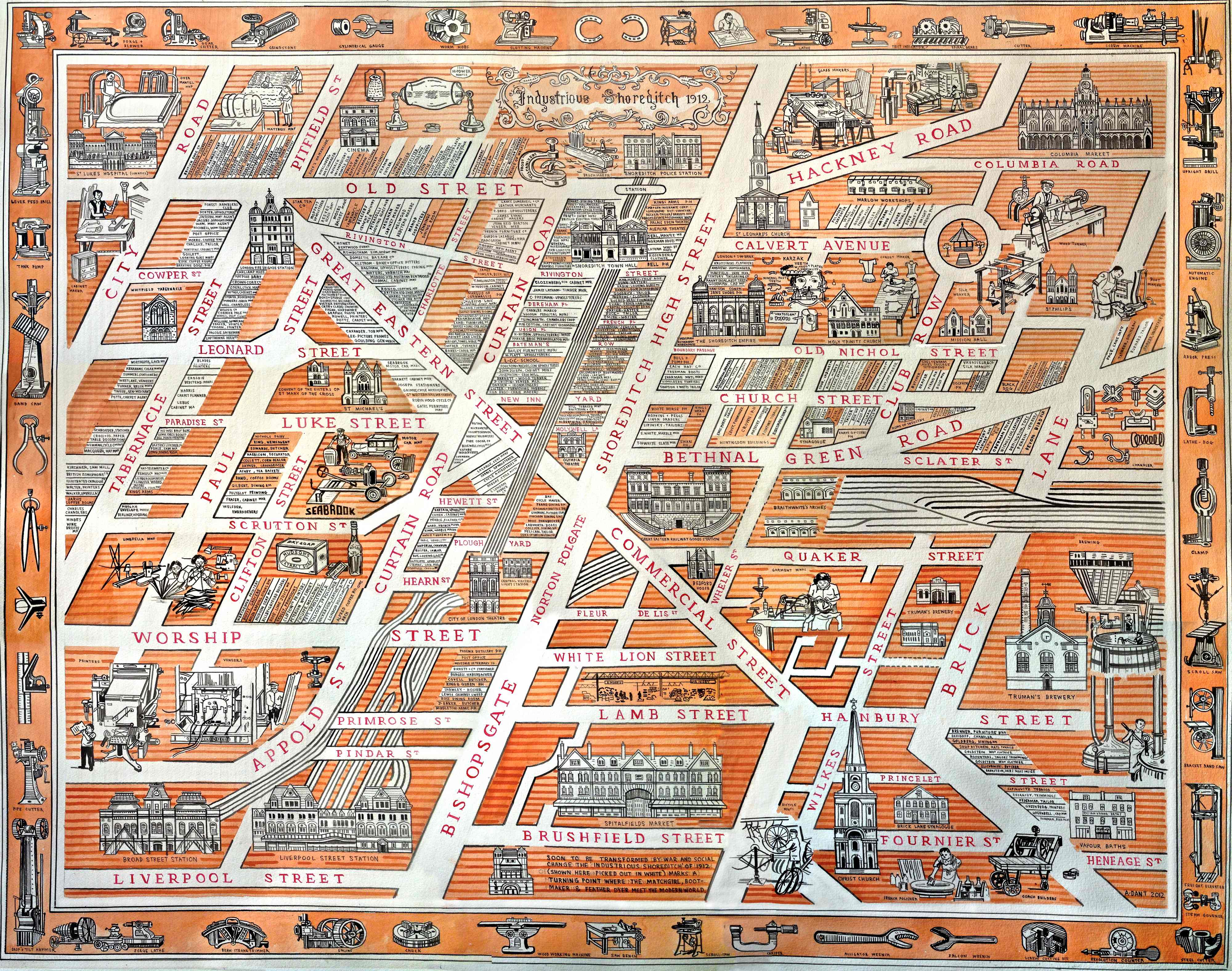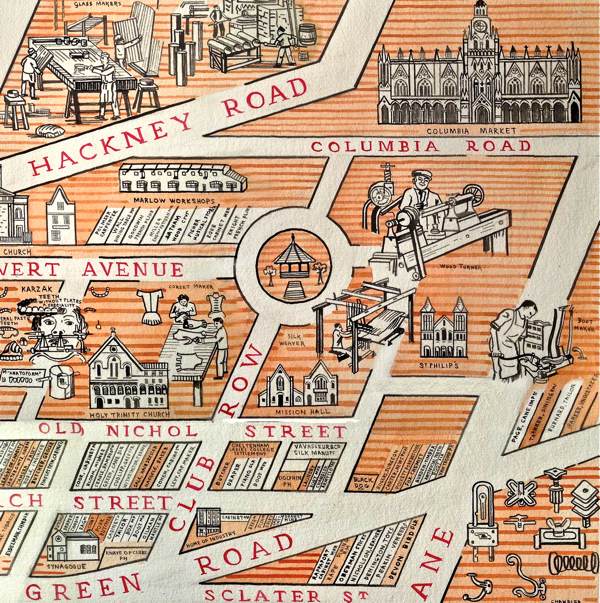Soerditch: Diary of a Neighbourhood, 2013
Adam Dant is a Jerwood Drawing Prize-winning British artist (2002).
Dant was born in Cambridge in 1967 but now lives and works in London.
He has won praise from The Guardian and Financial Times for his Hogarthian graphic style. He was educated at the Royal College of Art, University Faculty of Fine Arts, Abroad, India and the Liverpool School of Art.
http://en.wikipedia.org/wiki/Adam_Dant
Soerditch: Diary of a Neighbourhood, 2013
Adam Dant's hyper-detailed drawings are like objects magicked out of a
fictional realm. With their ornate borders and trompe l'oeil crinkled
edges, his fantastic maps, books and charts navigate worlds whose strange territory seems to depend on figures of speech or even hallucinations. His Bureau for the Investigation of the Subliminal Image
included studies of self-portraits supposedly hidden in paintings in
the Louvre. Dant meticulously documented these concealed images,
apparently rendered subconsciously by artists, as if they were part of
orthodox art history. Elsewhere, he has turned categorisation itself on
its head with "underneathism", painstakingly depicting from below
everything from supermarkets to beach life.
His peculiarly British
wit extends to social satire: the Princesses Beatrice and Eugenie are
among the tabloid favourites whose public personas Dant has
imaginatively unpicked, earning him comparisons with Hogarth. Furthermore, his works – especially Donald Parsnips Daily Journal,
one of his first projects – frequently resemble the output of an
18th-century press. They're more like pamphlets to be pored over in
coffee shops, not galleries.
Dant is a member of the London Institute of 'Pataphysics, a continuation of Alfred Jarry's "science of imaginary solutions". Members of its European equivalents have included Umberto Eco and one of Dant's big influences, the literary group Oulipo.
Skye Sherwin
http://www.theguardian.com/artanddesign/2012/sep/12/artist-week-adam-dant
Map of Industrious Shoreditch, 2013
Dazed Digital: What was it about the question “Where is the East End today?” that interested you?
Adam Dant:
I’d been producing a different, unusual map of my immediate locale,
Shoreditch, every year since I relocated there. The question interested
me as it affirmed a parity of opinion, whether an individual's
connection with ‘east London' was days or decades old. I was interested
in comparing the sensation of viewing a place for the first time with
the experience of culturally specific histories and agendas.
DD: What was your creative process behind the concept for the map?
AD: The
process of making the map was determined by the desire to meet as many
random individuals in east London as possible. I asked several ‘scouts'
to walk from the edge of London towards the 'heart' of east London,
asking individuals for directions en route. I had in mind the spiral
system of Paris' arrondissements as a model for imposing a type of
central planning on east London.
DD: Your work almost entirely surrounds maps and the creation of inspired and creative cartography.
AD: I'm
interested in maps as they represent the imposition of an artificial
order onto a seemingly random landscape in my drawings, as is often
determined by ‘literalist’ or ‘ridiculous’ schemes. It is supposed to
act as a parody of this and hopefully exposes the stupidity of the
attempts by various groups in history, christians, muslims, cyclists et
al, to organise and explain the universe according to their own agendas.
http://www.dazeddigital.com/artsandculture/article/13459/1/adam-dant-journey-to-the-heart-of-east-london
Map of Industrious Shoreditch, 2013
Satirising a contemporary urban world, Adam Dant‘s cartoon exhibition Soerditch, Diary of a Neighbourhood offers
an irreverent guide to Shoreditch. Embracing an irreverent newspaper
aesthetic, Dant’s sketches provide a mocking guide to the area’s
post-1993 residents. And what is most striking about “Tech City” and its
glitterati of Wifi-workers, street food vendors and Harry Potter
capitalists is the abandonment of history.
There are no blood relationships with the dead and the Victorian
furniture and rag factories have long been scrubbed clean of their
industrial residuum. With East London’s past shucked out within a
generation, the old warehouses and churches are like fumigated skulls.
They are merely an interim host that will exchange hands every thirty
years.
While the East London dead are ignored their buildings live on
vicariously without them. Originally assembled by coarse working hands,
there is a natural hierarchy with age and somehow an older building is
considered more ‘real’ than something new. History provides an emotional
backbone that modernity with all its superficialities and globalised
rootlessness simply cannot.
By mapping this technological, consumerist and leisure society,
Dant’s cartoons provides a wry sense of character and warmth to the
area. Shoreditch’s transformation from industrial workshop to a consumer
paradise is just another step along the road towards our final
destination as archaeology. The Roman Empire lies crushed underneath
East London’s converted warehouses and over time Shoreditch will follow
suit – a pop up world awaiting to collapse.
Daniel Agnew
http://danielagnew.org/tag/adam-dant/
Adam Dant from Supposed Histories on Vimeo.
Monday, 23 December 2013
Subscribe to:
Post Comments (Atom)





No comments:
Post a Comment